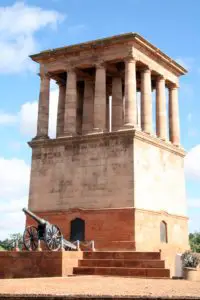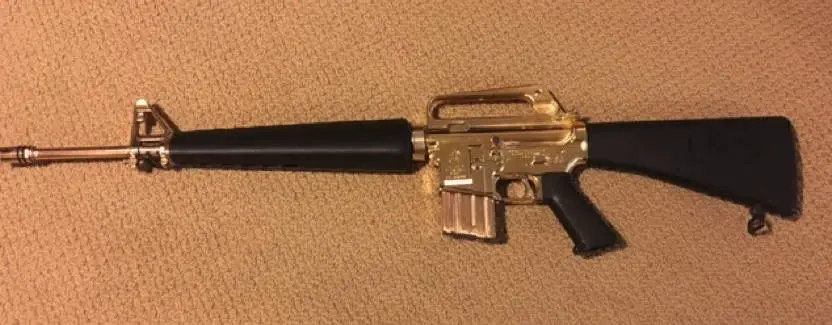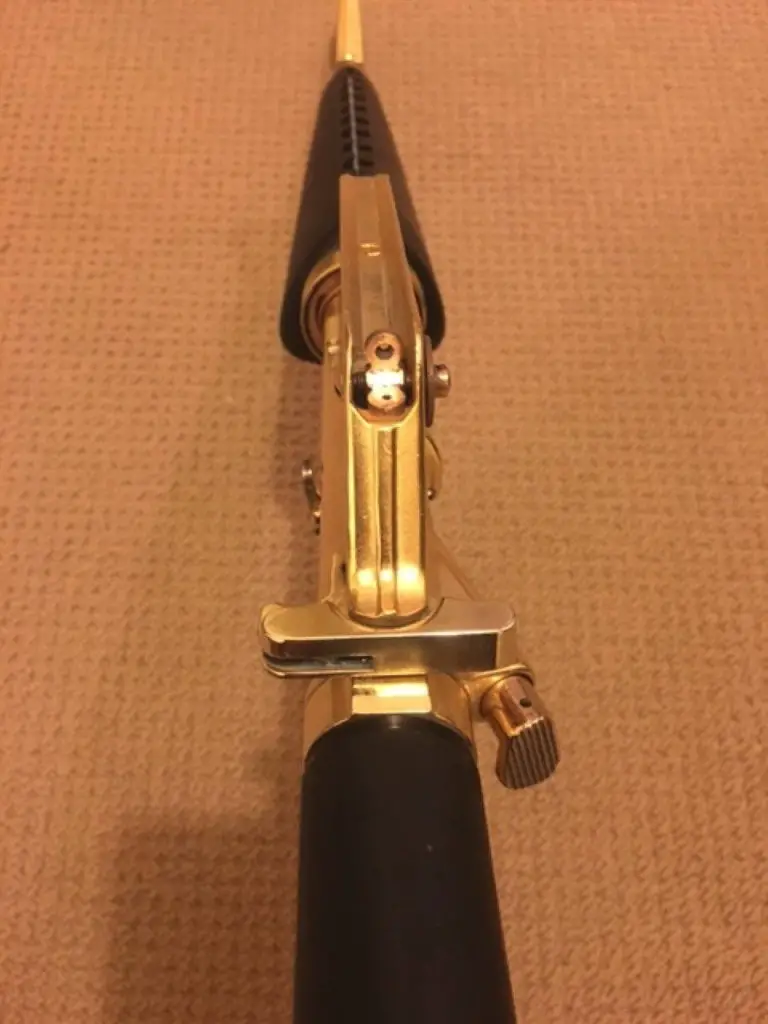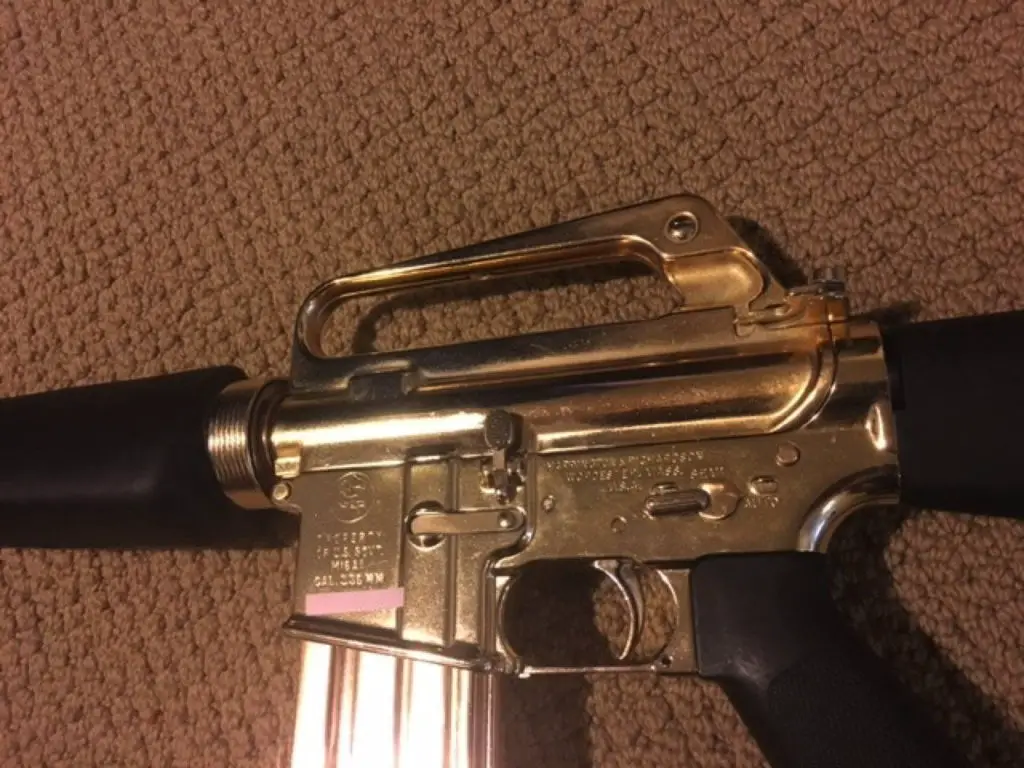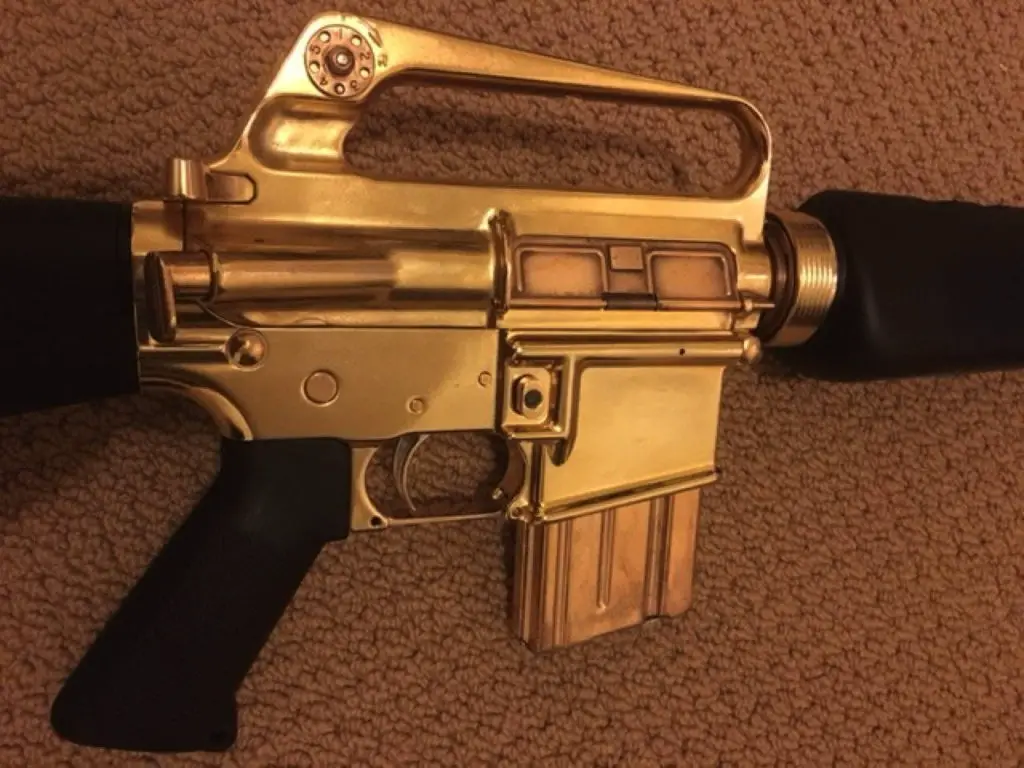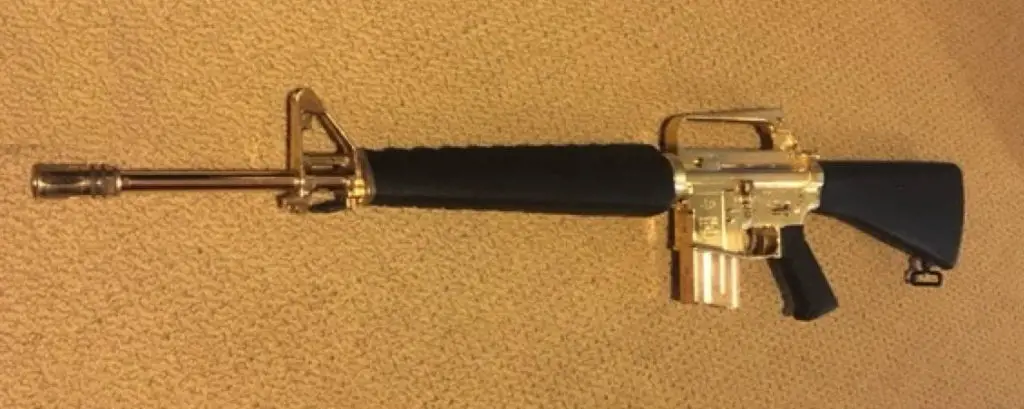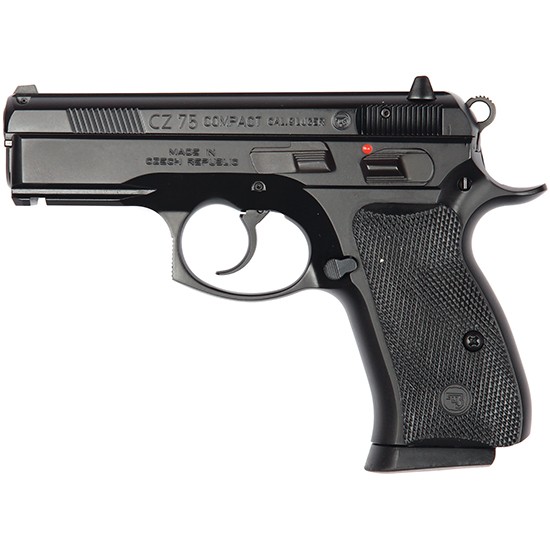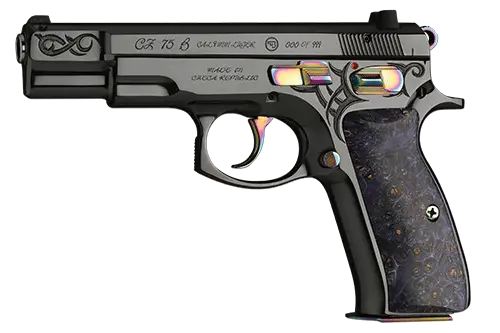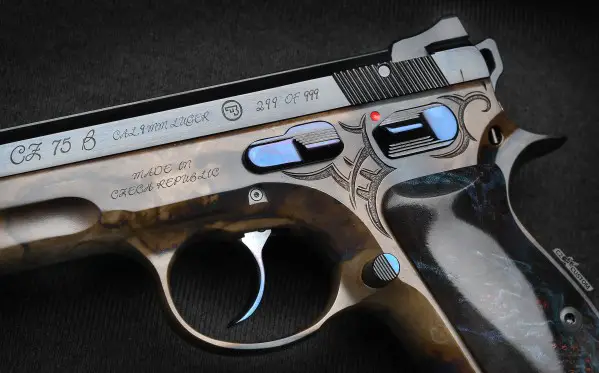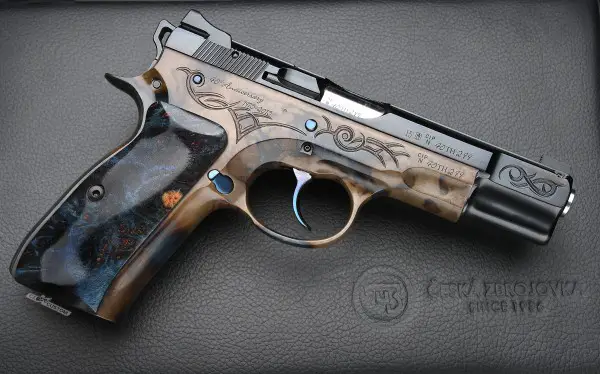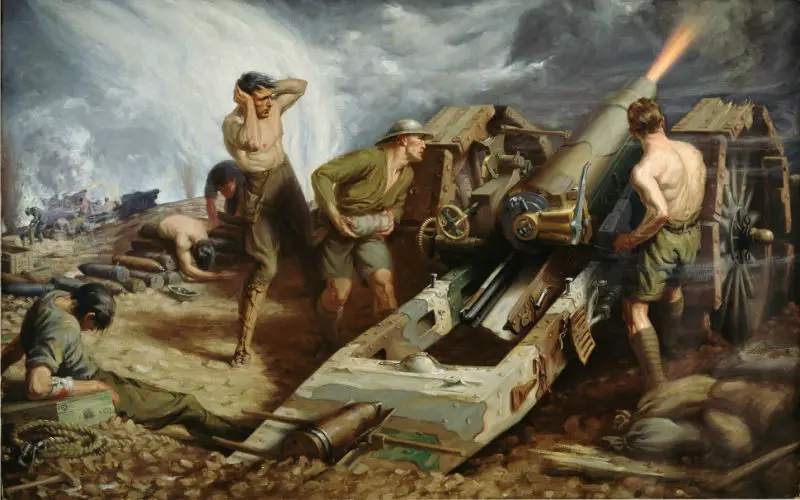Category Archives: Not Just Short for Arthur
Funny. It seems like we’re always one step behind in the culture wars. Here’s a short film — a bare five minutes — that was made by someone on the gun side of the cultural divide. In it, a man uses a magical talisman to travel back through time, to save a woman’s life. But it will take another magical talisman to get the job done.
Of course, even accepting the time-travel premise of the film, did anyone catch the enormous logical plot hole?
Still, it was very well done for what appears to be a student film; and the subject matter is as daring as all the crowd-followers in Tinseltown pretend to be. Here’s hoping that the filmmakers have a long and productive career ahead, despite their inclination for sacred cow sacrifice.
Poetry Minute: An Irish Airman Foresees His Death (Yeats, 1919)
An Irish Airman Foresees His Death
William Butler Yeats, published 1919
I know that I shall meet my fate
Somewhere among the clouds above;
Those that I fight I do not hate
Those that I guard I do not love;
My country is Kiltartan Cross,
My countrymen Kiltartan’s poor,
No likely end could bring them loss
Or leave them happier than before.
Nor law, nor duty bade me fight,
Nor public man, nor cheering crowds,
A lonely impulse of delight
Drove to this tumult in the clouds;
I balanced all, brought all to mind,
The years to come seemed waste of breath,
A waste of breath the years behind
In balance with this life, this death.
Many people take this poem as an example of Yeats’s powerful gifts of imagination and imagery, and his ability to bring modern events into classical poetic forms. But there actually was a real Irish Airman on the poet’s mind: Robert Gregory served with the Royal Air Force Flying Corps and was killed on the Italian front in 1917. Like Yeats, Gregory came from the wealthy Anglo-Irish gentry; his mother was a friend of the poet. This is the one that is best remembered, but Yeats actually wrote several poems about Gregory’s loss; In Memory of Robert Gregory is, after An Irish Airman, the one that is most critically admired. It uses a number of literary devices but then comes back to Yeats’s assessment of Gregory, the man:
Soldier, scholar, horseman, he,
And all he did done perfectly
As though he had but that one trade alone.
Gregory was a tragic figure. A 19-victory ace, at least according to Yeats, he had received the Military Cross and the French Legion d’Honneur, and was appointed to the command of 66 Squadron, RFC. Unbeknownst to Yeats, when he was shot down and killed on 23 January 1918, he fell not at the hands of a German or Austro-Hungarian enemy but either as a result of friendly fire from a mistaken Italian ally, or otherwise accidentally (the records are not clear).
Many fans of English poetry, especially Great War poetry, know An Irish Airman Forsees His Death. Break it down into quatrains and it’s easy to memorize, a great party trick — at least, with English Lit coeds. But relatively few of them can name the Irish Airman. Now you can.
Use your knowledge wisely.
Steyr / Rheinmetall Enters the G36 Replacement Competition
At least three manufacturers are competing in the evolving process of selecting the Bundeswehr’s replacement for the unsatisfactory G36 individual rifle. The participants include H&K, SIG-Sauer, and Steyr, which is partnering with Rheinmetall. (Gun history buffs, Rheinmetall is huge now, but evolved from an ancient gunmaking firm… Dreyse, of Prussian needle-gun fame). Dreyse was based in Sommerda, but Rheimetall calls Düsseldorf home today.
The story is told at the indispensable German defense blog, Thomas Wiegold’s Augen Geradeaus! (“Eyes front!”). Our meatball translation:
On the standing theme of the G36 and future assault-rifle of the Bundeswehr, at year’s end we’ve got a new data point: Three German enterprises will compete for the provision of the new standard weapon for German armed forces. Along with Heckler & Koch, which already supplies the G36 and has had success with the HK416 in France, and the Eckernforde-based business SIG-Sauer, the German defense concern Rheinetall is stepping in — with a weapon from the Austrian manufacturer Steyr Mannlicher. The Austrians were defeated by Heckler & Koch in the competition for the new Bundeswehr rifle in the early 1990s.
(Thomas, if you read this, you’re welcome to use any part of our translation on your site, should you want to put up an English post. We know your English is good but your time is limited, and there’s great interest in the non-German-speaking world in the Bundeswehr’s decision process).
In any event, he goes on from there to quote from a story in the Vienna newspaper Kurier, which says that Steyr is developing an AUG successor called the Gewehr bei Fuß or Foot-Soldier’s Rifle. The model being offered to the Germans is called the RS556.
The Austrian journos think that Steyr lost back in 1994 because of politics — EU Brüderschaft be damned, German officials wanted German soldiers carrying German guns. With 60% of the value added in the manufacture of the proposed Bundeswehr RS556 version being Made In Germany, they think the away team has a better shot. Our translation of part of the Kurier report:
The Austrian weapons manufacturer already had a shot in Germany in 1994, when its legendary Steyr Universal Rifle AUG (Sturmgewehr 77) had the best result in tests, according to reporting at that time. Yet the German manufacturer, Heckler & Koch in Oberndorf, received the contract for 176,544 military rifles for its Sturmgewehr G36.
So what is the RS556? Essentially, it’s a reformation of the AUG’s technology into an AR-15 form factor. Indeed, at a distance, it’s hard to tell it from a SIG or a 416. So however this shakes out, the AR is going to notch up another win. From the same Kurier report:
The new RS556 indeed looks like an American weapon, but it is the further development of the Steyr Sturmgewehr 77. With just a handgrip and no tools the barrel can be changed. Ther eare three barrel lengths available, and the rifle can be employed as assault rifle, submachine gun or light machine gun according to length.
You may recall this was a selling feature of the AUG, although not one that seemed to be prized by end users. It looks like the Steyr RS556 is also fully ambidextrous.
Due to a special surface coating, the rifle also works without gun oil, which is an especially large advantage in desert operations. The gas system and the rotary-locking bolt are inherited from the earlier StG 77 (AUG).
The AUG had some success, arming Austria, Australia (in a local version; bad news for ill-educated Yanks who always confuse those entirely different countries), some of the UAE forces and (briefly, because nobody paid to maintain them) the US Immigrations & Customs Enforcement agency. (ICE now uses M4s in either semi or surplus configuration, which have mostly replaced the late lamented AUGs and the not-as-lamented MP5s).
Literature of War: The Land Ironclads (H.G. Wells)
Wells is remembered today primarily for his imaginative science fiction novels The War of the Worlds and The Time Machine, both absolute milestones in the developing field. He’s less well known for his shallow socialist politics, and his works that tend towards the didactic, like In the Time of the Meteor and Things to Come did not hold up nearly as well.
But his short story The Land Ironclads, although much less developed than his novels, describes a near-future war with the prescience normally associated with his French counterpart Jules Verne; the decisive weapon of this war is the Land Ironclad, which is now known to the world as a Tank. But he published the story in 1903, a dozen years before tank development began; one wonders if this story was known to, and influenced, the builders of the early armored fighting vehicles. Consider this: the word “tank” was originally a cover name, to conceal the fact that the British were developing a “Landship” or “Land Dreadnought.’ Did they get the idea from Wells? Or was it just one of those ideas whose time was coming, at the hand of one man if not another?
Like Verne, Wells gets some details of his imagined machine wrong (the “footed” wheels he describes were actually used on some WWI field pieces, but tanks had the caterpillar track; and tanks would run on Otto-cycle internal combustion engines, not steam) but others were very interesting. The Land Ironclads come up to solve a problem of… trench warfare. (And recall, this story predates not only the Great War but also the Russo-Japanese War, often held up as an example military officer botched the chance to learn from. Consider his description of how a group of riflemen would work inside the Land Ironclad.
The riflemen each occupied a small cabin of peculiar construction and these cabins were slung along the sides of and before and behind the great main framework, in a manner suggestive of the slinging of the seats of an Irish jaunting-car. Their rifles, however, were very different pieces of apparatus from the simple mechanisms in the hands of their adversaries.
These were in the first place automatic, ejected their cartridges and loaded again from a magazine each time they fired, until the ammunition store was at an end, and they had the most remarkable sights imaginable, sights which threw a bright little camera-obscura picture into the light-tight box in which the rifleman sat below. This camera-obscura picture was marked with two crossed lines, and whatever was covered by the intersection of these two lines, that the rifle hit. The sighting was ingeniously contrived. The rifleman stood at the table with a thing like an elaborately of a draughtsman’s dividers in his hand, and he opened and closed these dividers, so that they were always at the apparent height—if it was an ordinary-sized man—of the man he wanted to kill. A little twisted strand of wire like an electric-light wire ran from this implement up to the gun, and as the dividers opened and shut the sights went up and down. Changes in the clearness of the atmosphere, due to changes of moisture, were met by an ingenious use of that meteorologically sensitive substance, catgut, and when the land ironclad moved forward the sites got a compensatory deflection in the direction of its motion. The riflemen stood up in his pitch-dark chamber and watched the little picture before him. One hand held the dividers for judging distance, and the other grasped a big knob like a door-handle. As he pushed this knob about the rifle above swung to correspond, and the picture passed to and fro like an agitated panorama. When he saw a man he wanted to shoot he brought him up to the cross-lines, and then pressed a finger upon a little push like an electric bell-push, conveniently placed in the center of the knob. Then the man was shot. If by any chance the rifleman missed his target he moved the knob a trifle, or readjusted his dividers, pressed the push, and got him the second time.
This rifle and its sights protruded from a porthole, exactly like a great number of other portholes that ran in a triple row under the eaves of the cover of the land ironclad. Each porthole displayed a rifle and sight in dummy, so that the real ones could only be hit by a chance shot, and if one was, then the young man below said “Pshaw!” turned on an electric light, lowered the injured instrument into his camera, replaced the injured part, or put up a new rifle if the injury was considerable.
Do not mistake this, though, for being all technology and no drama and humanity. Here, for instance, is the portrait Wells paints in a paragraph of a Land Ironclad captain and his crew:
He was a young man, healthy enough but by no means sun-tanned, and of a type of feature and expression that prevails in His Majesty’s Navy: alert, intelligent, quiet. He and his engineers and his riflemen all went about their work, calm and reasonable men. They had none of that flapping strenuousness of the half-wit in a hurry, that excessive strain upon the blood-vessels, that hysteria of effort which is so frequently regarded as the proper state of mind for heroic deeds.
And the whole theme of the story is not, as you might think, man versus machine, but more what sort of man would fight in these machines (“devitalized townsmen”) and what sort would do without (“brutes,” “cunning, elementary louts,” from “our open-air life”).
For these reasons alone we could recommend The Land Ironclads, and advise you to go Read The Whole Thing™. But the very best part of it, which we shall not spoil for you, is Wells’s portrait of his point of view character, the War Correspondent (who is never named, beyond that). If you believe that the schism between soldier and scribe is a new thing, do read this story.
As an little something extra, here is a Librivox recording of the story, so you can listen instead of read.
May this Christmas bring war only in fiction, science or otherwise!
Great War Poetry Minute: Arms and the Boy by Wilfred Owen MC
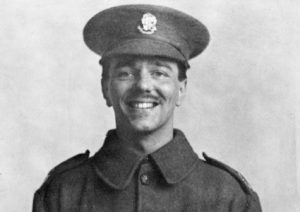 Owen, a British officer, composed poetry in the final year of his life, 1917-1918. He seems to have begun writing in earnest whilst confined at Craiglockhart Hospital in Edinburgh with “neurasthenia,” aka shell-shock (or as we say today, PTSD). He had become a pacifist by his experience of war, and through his deep Christian faith. But after meeting Siegfied Sassoon, a war hero who wound up in Craiglockhart after disrupting Parliament with a pacifist demonstration, Owen formed the idea that he “must get some reputation for gallantry before I could… declare my principles.”
Owen, a British officer, composed poetry in the final year of his life, 1917-1918. He seems to have begun writing in earnest whilst confined at Craiglockhart Hospital in Edinburgh with “neurasthenia,” aka shell-shock (or as we say today, PTSD). He had become a pacifist by his experience of war, and through his deep Christian faith. But after meeting Siegfied Sassoon, a war hero who wound up in Craiglockhart after disrupting Parliament with a pacifist demonstration, Owen formed the idea that he “must get some reputation for gallantry before I could… declare my principles.”
He returned to the Front in September 1918, telling his brother, “”I know I shall be killed. But it’s the only place I can make my protest from.” His statement was prescient: Owen, the Christian turned warrior to secure a platform from which to redeclare his Christian pacifism, quickly established a reputation for bravery, but was shot and killed on 4 November 1918, a mere week before the Armistice. The site War Poetry UK calls him “The greatest of the war poets who have written in the English language,” which is all the more remarkable for his very short span of work, and the few poem he wrote (perhaps thirty in all), of which only five were published before the end of the war, three anonymously. His letters are quite as engaging, and as poetic in their language as anyone else’s self conscious poetry. He wrote to Sasson, enroute to the front: “This is what the shells scream at me every time: ‘Haven’t you got the wits to keep out of this?’”
The death of Owen, the brief flash of his talent, is a microcosm of the loss to humanity that was the First World War. While he is best remembered for the bitter “Dulce et Decorum est,” this less-known poem is presented for your consideration. -Ed.
Arms and the Boy
Let the boy try along this bayonet-blade
How cold steel is, and keen with hunger of blood;
Blue with all malice, like a madman’s flash;
And thinly drawn with famishing for flesh.
Lend him to stroke these blind, blunt bullet-leads,
Which long to nuzzle in the hearts of lads,
Or give him cartridges of fine zinc teeth
Sharp with the sharpness of grief and death.
For his teeth seem for laughing round an apple.
There lurk no claws behind his fingers supple;
And God will grow no talons at his heels,
Nor antlers through the thickness of his curls.
We shan’t say much about the poem itself, except that the alliteration/consonance/vowel-shift rhyme scheme (the specific term for which appears to be “pararhyme”) is unusual and vaguely disturbing, and that the poem was likely inspired by (or contrapuntal to) Sassoon’s The Kiss, which we discussed back in 2013. -Ed.
Another Thomas Hardy War Poem
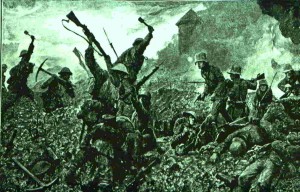 As these have been received rather well, let’s reach back across a century-plus to 1902, when Hardy was writing about the Boer War, which he (as most liberals of the day) opposed as, shall we say, an excess of the Empire. (In the United States, at the time, sympathies were also largely with the Boers as well).
As these have been received rather well, let’s reach back across a century-plus to 1902, when Hardy was writing about the Boer War, which he (as most liberals of the day) opposed as, shall we say, an excess of the Empire. (In the United States, at the time, sympathies were also largely with the Boers as well).
The British defeated the much smaller (although equipped with higher quality arms at the squad and company level) forces of the Afrikaner settlers, only to find their foes continuing a shadow guerrilla war — which Britain then suppressed, effectively, with absolute ruthlessness. But this poem refers to the earlier, uniformed-units-on-units phase of the war, and, indeed, Hardy does what he can to universalize his sentiment.
The Man He KilledHad he and I but metBy some old ancient inn,We should have sat us down to wetRight many a nipperkin!But ranged as infantry,And staring face to face,I shot at him as he at me,And killed him in his place.I shot him dead because —Because he was my foe,Just so: my foe of course he was;That’s clear enough; althoughHe thought he’d ‘list, perhaps,Off-hand like — just as I —Was out of work — had sold his traps —No other reason why.Yes; quaint and curious war is!You shoot a fellow downYou’d treat if met where any bar is,Or help to half-a-crown.”
Here you see him prefiguring many of the themes and poems of the next great war.
Hardy is far from the first or the last to note that, whatever disputes the nations and their elites may have, the poor bloody infantry is pretty much the same character all the world over; and the riflemen in opposing rifle platoons were more alike one another, perhaps, than either of them was like his officers, or like the politicians or nobles who sent them to war.
One is reminded of the passage in All Quiet on the Western Front, in which Paul finds himself alone in a crater in No-Man’s-Land with a Frenchman he has mortally wounded, and complains to his dying enemy, as if he could understand, “Who do they never tell us that you are men like us?”
Let’s Have Another Martial Poem by Hardy
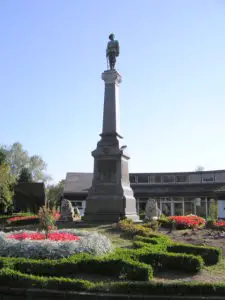
This memorial at Crewe, England, is typical of memorials that served as cenotaphs for fallen soldiers whose names were not repatriated — like Drummer Hodge.
We’ve been planning to write something about President-elect Trump’s selections for national security posts and how they compare to the incumbents and recently departed individuals who warmed those chairs during the Obama and Bush administrations, but as of press time for this post (Monday night) he hadn’t named any names.
So instead, we go back to Thomas Hardy. We knew him as a novelist (Tess of the d’Urbervilles; Jude the Obscure), and only when we published a WWI (actually, barely pre-WWI) poem of his did we bother to look him up and learn he is better regarded in English Lit circles for his poetry — or was, before English Lit became the propaganda arm of the Great Buggernaut, in which only race, sex and social justice count, and Hardy is dismissed as a deceased cismale heteronormative cryptofascist, because white.
That’s why you’ll never see a poem like this brief lament of the short life and solitary death of the eponymous Drummer Hodge out of the current crop of would-be literati. Fortunately, Hardy’s stuff, like many others more talented than the post-talent postmoderns, has been written down for our reading pleasure.
They throw in Drummer Hodge, to rest
Uncoffined — just as found:
His landmark is a kopje-crest
That breaks the veldt around:
And foreign constellations west
Each night above his mound.Young Hodge the drummer never knew —
Fresh from his Wessex home —
The meaning of the broad Karoo,
The Bush, the dusty loam,
And why uprose to nightly view
Strange stars amid the gloam.Yet portion of that unknown plain
Will Hodge for ever be;
His homely Northern breast and brain
Grow to some Southern tree,
And strange-eyed constellations reign
His stars eternally.
Hardy here is writing about the then-current Boer War. His vocabulary contrasts “homely” England — “Wessex” was his fictional county used in many works, named for an ancient kingdom, which he overlaid on the topography of rural Dorset where he was born, lived and died — with “strange” South African words: karoo, kopje, veldt, just as informed Britons learned these words in dispatches from war correspondents.
There is no poem this good that was published in a literary poetry magazine this year. Or last year. For all practical purposes, English language poetry is a dead art. Yet, in its grave, “uncoffined; just as found,” poetry from a golden age still sings…
…if one cares to listen.
Which Bond Villain’s M16A1 Is This?
We give you, an H&R M16A1.
This rifle was:
A. Property of Auric Goldfinger
B. Property of Francisco Scaramanga
C. Property of Uday and/or Qusay Hussein
D. Property of George Soros
E. Just some dude’s retro build, with a twist.
F. Shiny! (Gratuitous reference).
If you guessed any of those, you probably had a plausible reason, but the correct answer is E above. Here’s the Bond-Villain’s-Eye view:
We found this in the treasure trove that is the ARFCOM Retro Forum. The builder of this exotically-finished M16A1 clone, whose user name is “redbaby,” had this to say (lightly edited for spelling and punctuation):
I saw some historic retro that was actually gold plated so I decided to try this out. My favorite was the H and R so thats how I went. I really had fun building this one from an 80 percent receiver. It doesn’t hide well but it’s fun to have. 24 K gold plate. Hope you enjoy the photos.
I did the plate myself as its hard to get locals to do it because of the FFL issue. Nickel plate is needed, then gold. If you have a fine control power source its not super expensive to do. If you have to buy the rectifier it gets cost prohibitive. I learned a ton doing this. It puts a lot of smiles on faces when they hold it. It’s been worth it.
The only one I have seen is H and R . Was through a glass case at a gun show It was a transferable M16A1 and way out of my ability to own. Mine, alas, is mere semi auto, new manufacture look-alike. I plated all parts except the hammer and disconnector. Everything else is plated. I am thinking I will nickel plate another maybe a 1911. I had way too much fun to stop now.
He isn’t the only forum member to bling out an AR. Another, HKILLER, replied:
I like it. Im working on a GM CHROME one.
The thread is brief, but interesting. The Retro Forum is a great place for fans of early ARs to hang out. And it’s the global armory of international megalomaniacs of mystery.
A Couple of Rare CZs Available
First, the practical pistol. This is much like the P-01 we carry, except with an extended mag release, steel frame and an ambidextrous safety (instead of the P-01’s alloy frame and decocker).
CZUB wound up holding the bag for an order of 500 of them, and they’ve all gone to a US distributor. They’re reasonably priced for an all-metal quality gun, and available from several different wholesalers for delivery to your FFL (It looks like the guns pass through these wholesalers on paper, but drop-ship from the distributor). In alphabetical order:
- Anacortes Gun Shop (which has a live-update of the number remaining in distributor inventory);
- Mr Gun Dealer (a veteran owned business, it says here);
- Tombstone Tactical (which has a cool name, and free shipping);
- Also, Slick Guns is not a dealer, but has a comparison page that lets you shop multiple dealers by SKU (that link checks this gun), including the ones linked here and some others besides.
Note that the low-cost sellers at KY Gun Co. use a picture of this gun, but the one they have is not the same SKU, and not the gun illustrated, SKU 99021. (They have an image disclaimer on the page). You can save money there — they often retail guns for less than your local FFL can get them wholesale through the manufacturer’s approved channels — but never buy from there without matching manufacturer SKUs.
Personally, we prefer the light weight of the alloy frame, and these days we prefer a momentary-contact decocker to either the traditional CZ-75 safety (where the available modes are cocked and locked, and hammer down locked or unlocked) or the decocking safety as pioneered by Walther and used by so many other guns (Beretta, old S&W autos, etc.). But some people want these either for the features or for the rarity of a short-run CZ. (For hard-core collectors, note that many of the practical users will have CZ Custom or CGW customized triggers, thinning the initial herd of 500).
Hat tip to in the comments, who sent us to this thread at the CZ Firearms forum.
Next, we have a work of art. The CZ-75B 40th Anniversary already comes in a limited edition of 1000 (of which 999 were sold, numbered 40th001 through 40th999), with some neat features. This is the prototype, 40th000, literally # 1 of 1,000.
CZ USA describes it, as you might expect, in glowing detail:
During the forty years since its 1975 introduction, the CZ 75 has grown to be one of the most important handgun designs in history. Over the last four decades, the 75 became the most widely used handgun among police and military worldwide and ranks in the top two most copied handgun designs ever. To celebrate the anniversary, CZUB set their master engraver, Rene Ondra, to the task of creating a special pistol for the occasion.
Each pistol is hand-engraved in the Czech Republic in true old-world style, with a hammer pushing the engraver’s tool through each minute detail of the art decorating the slide and frame, which are then polished and finished in a deep, glossy blue.
The controls, extractor, grip screws and magazine baseplate are finished in a rainbow titanium nitride, an attractive and extremely tough finish. Lest there are any concerns about the durability of this finish, this is the same type of finish that is applied to drill bits to extend their working life up to three times those without the coating. To finish off the look, smooth, high-grade California birds-eye Maple grips are added. Dyed to match the hues of the frame and controls, the grips seem otherworldly, looking less like wood and more like a snapshot sent to Earth from the Hubble Space Telescope.
Chambered in 9mm, the 40th Anniversary Limited Edition ships in a leather-bound presentation case with two 16-round magazines. Only 1000 pieces will be produced, each individually numbered and accompanied by a certificate of authenticity.
That’s nice, and a classically Czech mix of heart-of-Europe craftsmanship and space-age technology. But that’s not the work of art we’re talking about. It’s this work of art. CZ Custom (a private firm that works closely with the importer, CZ-USA, and which is one of the two best-regarded CZ tuners) took one of these rare, expensive guns (#299 of 999), and is selling it for more than double the money that the 40th Anniversary guns (some of which are still out there for sale, including at CZ Custom) go for. Why? Well, just, look:
Nice, eh? Yes, that’s color case hardening on the frame. Note it’s also been reshaped to a classic, elegant round-bow trigger guard. Flip side:
Now, here’s what they did to it:
CZ Custom’s Eric Zinn took special care in putting this beauty together. Great frame work from high cut for a better grip, reshaping the beavertail and rounding the triggerguard for the classic CZ look.
Also the CZ Custom trigger job with competiton hammer, short reset disconnector, extended firing pin, milled for Heinie Slant Pro sights and a beautiful black serrated front sight.
Special attention to the finish is performed too. Beautiful polished blue slide by Eric and color case harden frame done by MJ Tulo Gunworks and hand laquer wood grips.
There is no other CZ75 like this one combining beauty and performance.
As far as we know, this is the only one they made. We want it… but we told you guys first. How selfless is that? (We also are a bit diffident about the $3,500 price tag). One of a kind anything is hard to sell. But the buyer of this will have the only gun like it — a beautiful gun that is, alas, too fine to shoot.
Channel Firing
For the “military post” hour today (it will actually be up some minutes late), we dig into our spotty repository of World War I poetry, to offer up a piece, not by some young officer at the Front, but by one of Britain’s top men of letters, Thomas Hardy. (And here we always thought of him as a 19th Century guy. He was in his seventies as he wrote this and would live more than 10 more years). (Edited to add: this poem was actually written before the war, and he really was, as is mentioned, complaining about a Royal Navy exercise. We had forgotten that). 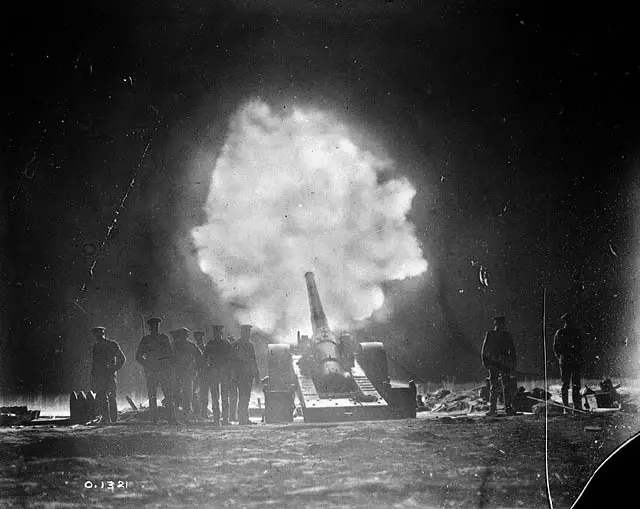
Channel Firing
That night your great guns, unawares,
Shook all our coffins as we lay,
And broke the chancel window-squares,
We thought it was the Judgement-dayAnd sat upright. While drearisome
Arose the howl of wakened hounds:
The mouse let fall the altar-crumb,
The worm drew back into the mounds,The glebe cow drooled. Till God cried, “No;
It’s gunnery practice out at sea
Just as before you went below;
The world is as it used to be:“All nations striving strong to make
Red war yet redder. Mad as hatters
They do no more for Christés sake
Than you who are helpless in such matters.“That this is not the judgment-hour
For some of them’s a blessed thing,
For if it were they’d have to scour
Hell’s floor for so much threatening. . . .“Ha, ha. It will be warmer when
I blow the trumpet (if indeed
I ever do; for you are men,
And rest eternal sorely need).”So down we lay again. “I wonder,
Will the world ever saner be,”
Said one, “than when He sent us under
In our indifferent century!”And many a skeleton shook his head.
“Instead of preaching forty year,”
My neighbour Parson Thirdly said,
“I wish I had stuck to pipes and beer.”Again the guns disturbed the hour,
Roaring their readiness to avenge,
As far inland as Stourton Tower,
And Camelot, and starlit Stonehenge.
There is more going on in this poem than seems at first glance. At first, it condemns the madness of the war, and the madness of the men that undertake it — hardly an unusual theme. But the device Hardy chooses, of having the old dead themselves condemn war, and not only them, but God Himself — that’s why he’s one of the Dead White Males people read, and your Grand-Uncle Nigel is not.
“That this is not the judgment hour [is] for some of them a blessed thing,” speaks the deity. It is not coincidental that the guns that wake the dead — an image that is grown from an ancient English expression itself — break the windows not in the house, but in the “chancel,” a word which many will associate vaguely with church but which particularly means the part of a Christian church around the altar; where the priest conducts Mass. (It is elevated above the pews of the parishioners, like a theater stage). The windows here are not simple portals to the outdoors, but usually crafted by the architect to shine light on the altar (the chancel is traditionally the east, sunrise side of the church), and filled with stained-glass decorative art, usually depicting some uplifting sermon, such as Christ’s ascent into heaven.
The poem’s structure and rhyme scheme is simple, its words — apart from chancel and some iconic English place names — consciously basic and Anglo-Saxon. This makes it very accessible to all classes and all educations, easily memorized, and yet, it rewards some careful study, if you care to try.

Kevin was a former Special Forces weapons man (MOS 18B, before the 18 series, 11B with Skill Qualification Indicator of S). His focus was on weapons: their history, effects and employment. He started WeaponsMan.com in 2011 and operated it until he passed away in 2017. His work is being preserved here at the request of his family.



